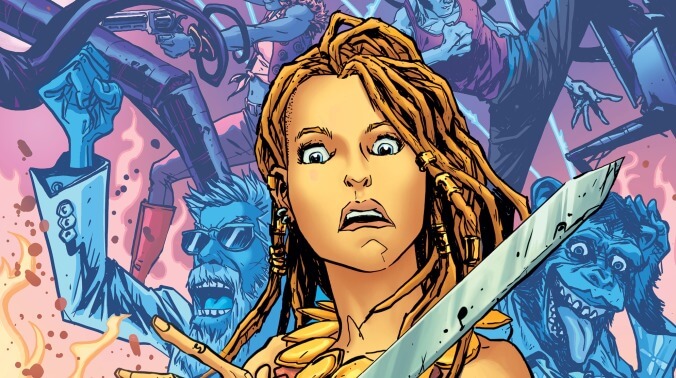Travel back to an eccentric period of comics in this Bronze Age Boogie exclusive

The Bronze Age of comics, typically considered the early ’70s through the mid ’80s, was a fascinating period that saw superheroes evolving while pulp genres regained popularity. Books like Conan The Barbarian, Master Of Kung Fu, and Swamp Thing brought epic fantasy, dynamic martial arts, and chilling horror to mainstream audiences. The new AHOY Comics series, Bronze Age Boogie, pays tribute to this time with its story of a barbarian princess fending off a Martian invasion in both 1975 AD and BC. Written by Stuart Moore with art by Alberto Ponticelli, colorist Giulia Brusco, and letterer Rob Steen, Bronze Age Boogie is a wacky genre mash-up that starts with a bang, throwing readers into a massive ancient conflict while steadily injecting strange new elements into the plot. Every AHOY issue is a “comic-book magazine” loaded with different backup content, and Bronze Age Boogie contains an additional short comic and two prose pieces to give readers extra bang for their buck.









































